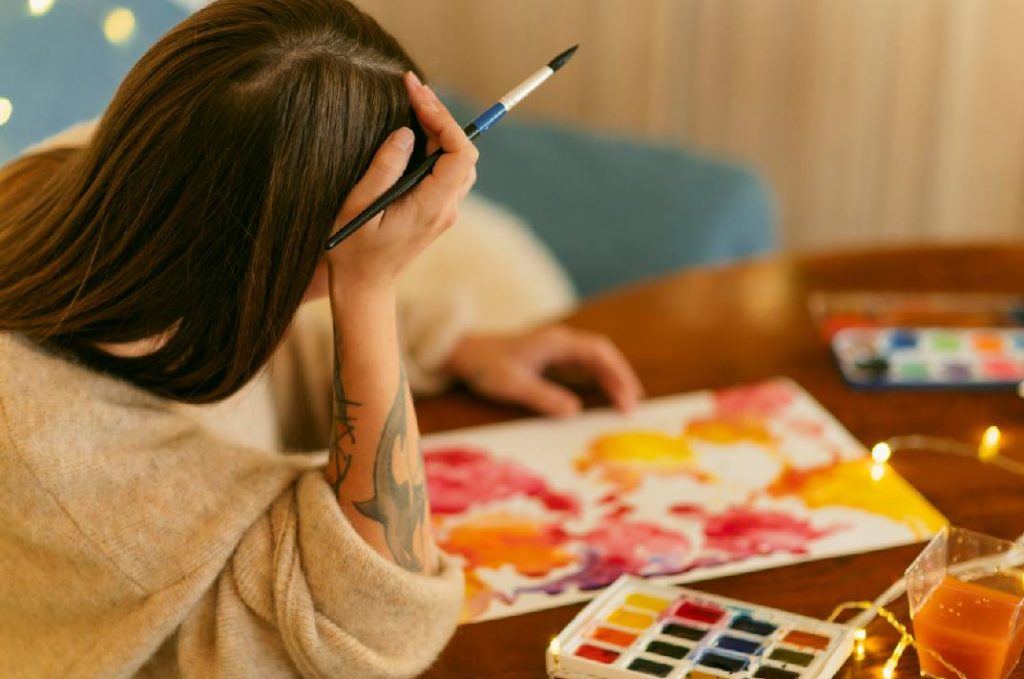
In the tapestry of therapeutic practices, art therapy emerges as a vibrant thread, weaving together creativity and healing in a way that words alone sometimes cannot. This unique form of therapy offers a powerful means for individuals to explore emotions, manage stress, and enhance self-awareness through the process of making art. Let's delve into the world of art therapy, examining its benefits and the profound impact it can have on emotional expression.
Art therapy is a form of psychotherapy that uses the creative process of art-making to improve and enhance the physical, mental, and emotional well-being of individuals of all ages. It's grounded in the belief that creative expression can foster healing and mental well-being. Art therapists are trained professionals who guide individuals through this therapeutic journey, helping them to explore their feelings, reconcile emotional conflicts, and boost self-esteem.
Art therapy provides a safe space for individuals to express complex or difficult emotions without the need for words. Through painting, drawing, sculpting, or other art forms, people can explore their feelings and thoughts, often uncovering new insights about themselves.
The act of creating art can be incredibly therapeutic and relaxing. Engaging in art therapy sessions has been shown to lower stress levels and promote a sense of calm and tranquility, providing a welcome break from the stresses of daily life.
Art therapy encourages individuals to take pride in their artistic creations, fostering a sense of accomplishment and boosting self-esteem. Additionally, it promotes self-awareness, as individuals reflect on their artwork and the emotions or experiences it represents.
For those who find it challenging to verbalize their feelings, art therapy offers an alternative means of communication. The artwork created can serve as a starting point for discussing emotions and experiences that might otherwise remain unexpressed.
Art therapy is particularly beneficial for individuals processing trauma. It provides a non-threatening way to explore and express feelings related to traumatic events, aiding in the healing process.
Art therapy is inclusive and can be beneficial for individuals across a wide spectrum of ages and backgrounds, including:
- Children and adolescents struggling with emotional or behavioral issues
- Adults experiencing mental health challenges, such as depression, anxiety, or PTSD
- Elderly individuals coping with aging-related concerns or cognitive decline
- People undergoing medical treatment or recovering from illness
Art therapy is highly individualized, with therapists tailoring sessions to meet each person's unique needs and goals. No artistic talent or experience is necessary, as the focus is on the process of creation rather than the final product.
Art therapy sessions can take many forms, from individual and group sessions to workshops and community projects. Regardless of the format, the emphasis is always on creating a supportive environment where individuals feel free to explore and express themselves through art.
Art therapists play a crucial role in guiding the therapeutic process. They help individuals understand the emotions and thoughts that emerge during art-making, offering insights and supporting personal growth and healing.
For many, art therapy has been a transformative experience, offering a path to understanding and healing that was previously unattainable through traditional talk therapy alone. The tangible nature of the artwork allows for a different, often deeper, exploration of emotional issues.
Art therapy can also foster connections between individuals, particularly in group settings. Sharing the experience of creating art and discussing its meaning can create bonds and offer mutual support among participants.
The benefits of art therapy for emotional expression are vast and varied. By offering a unique blend of creativity and healing, art therapy provides individuals with a powerful tool for exploring their emotions, reducing stress, and promoting personal growth. Whether through painting, drawing, sculpting, or any other form of art, this therapeutic practice offers a path to self-discovery and healing that resonates deeply with many. In the journey toward emotional well-being, art therapy stands out as a meaningful and transformative experience, inviting everyone to explore the healing power of creativity.